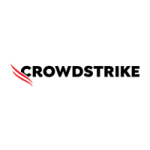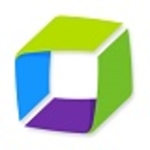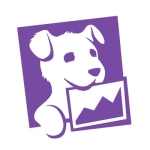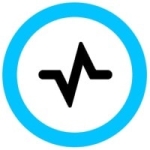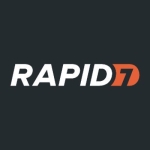What is our primary use case?
We have been using LogRhythm for the last seven to eight years. About a year-and-a-half ago we made a push, which is why I was brought on, to go global with it. The global use case is security only, we're not getting back to the business. It's the first time I've done SIEM that works that way. It's all about feeding the SOC and IR teams and letting them do their job.
How has it helped my organization?
We use Dell SecureWorks right now for our SOC. But in a much quicker-than-expected manner - literally a few months after we started really bringing everything in, and we took over teaching them how to use LogRhythm - our SOC has fallen right into line. LogRhythm is already almost replacing Dell SecureWorks and we might be able to get rid of Dell SecureWorks sooner than later.
I was the one who started getting the SOC team involved. I needed to teach them. They were a very frustrating group that didn't want to learn LogRhythm. "No, no, we're doing it our way," and it was very manual. They would pull information from Dell SecureWorks and compare it manually against other information. They were totally against LogRhythm. But very quickly, they changed their minds. Now, we get calls constantly to help support them. The leaders of the SOC, that understood LogRhythm and had some LogRhythm background, have implemented different things that have totally surpassed where we thought, six months ago, we would be. Things are going great.
We have seen a measurable decrease in the meantime to detect and respond to threats.
What is most valuable?
I've worked with a lot of SIEMs. It's nice that it's straightforward.
What needs improvement?
My biggest complaint is documentation. Everyone tells me, "We have documentation on the LogRhythm Community site." I have searched for different types of documentation on numerous occasions, and it might be there, but it's not easily findable.
We're running an HA situation and we wanted to do an upgrade. There was "Oh, and do this," in the documentation. It didn't give you an order, step one, step two. It was just, "You've got to do this and this and this." We decided to do it as they wrote it and it totally messed us up. We had to then reinstall. It just was a mess.
Also, I can't really talk about features I would like until I have a stable environment. Once I have that, there are things that we would like. For example, we're doing a lot of things in-house. We're doing auto-acceptance; LogRhythm doesn't do it quickly enough. We develop something because LogRhythm is taking a long time in developing things, and then we want to present it to LogRhythm and say, "What do you think?" We don't even mind if they steal it and use it. But at the same time, we're getting a response of, "No, you're probably not doing it right. You're probably missing stuff." We're still going to do it.
My biggest issue - I know that they say they're doing it - is that the API-building is extremely important. They keep saying it's coming, it's coming. It's not coming fast enough. I don't care if they need to double their team size to get it out there quicker, the world is already in the cloud and we can't monitor it. That's a big problem for us. My boss keeps coming to me about it. That's an issue.
Finally, writing parsers is much easier - and I can tell you a few things about it - in Security Analytics. I would love LogRhythm to get something similar to that, instead of having to write out RegEX. That's very old-school.
Buyer's Guide
LogRhythm SIEM
October 2025
Learn what your peers think about LogRhythm SIEM. Get advice and tips from experienced pros sharing their opinions. Updated: October 2025.
872,019 professionals have used our research since 2012.
For how long have I used the solution?
What do I think about the stability of the solution?
After a year-and-a-half, we're not stable yet. Every time we think we're stable for a week or two, we wake up the next morning to another million logs backlogged somewhere. We're very unhappy with that, very frustrated. We've been working with engineering and upper levels, with everybody. The one positive part of that is that everybody has been very responsive and everybody has been very helpful in trying to stabilize our environment. Version 7.3 destroyed us. There is not one device that we have original code on. Everything is DevCode.
To be fair, we're a very tough company. We're presently at 5.5 billion events a day. We're sustaining 55,000 logs a second. We have a pretty big deployment, but it's not stable.
What do I think about the scalability of the solution?
We were supposedly built for 100,000 logs per second, and if you read the answer I just gave to the "stability" question, you know we're still not stable at 55,000 events.
How are customer service and support?
The tech support is fantastic. The only complaint I have about tech support is that sometimes they'd rather try to hold on and fix something, rather than escalating. Things do need to be escalated more quickly.
The source of the issue - meaning the customer - has to be part of the evaluation. I've been doing this for 15 years. When I go to customer support it's because I've already run every bit of the gamut and my teams have done the same. I'm more than happy to spend a week looking, from a support perspective, at this and this and this. But at the same time, they should be objective enough, so that if I were to say, "Hey, I don't see it coming from that area, let's look someplace else," to take my word for it. They should know me as a customer. Know your customer is more the issue.
How was the initial setup?
They installed two weeks before I got there and I've been miserable about that. I'm in the midst of re-architecting the design.
Installation/upgrade is a complex process. We haven't gone through anything straightforward. I did learn from one of my breakout sessions, here at RhythmWorld 2018, that 8.0 is hopefully going to fix that a bit. There were some things that complicated it when we did our first upgrade to 7.3. We've gotten better at it.
What other advice do I have?
My advice:
- Get a SIEM.
- Which SIEM I would suggest really depends on what your key use cases are. There are other SIEMs that do other things better. As an example, Splunk brings in logs wonderfully. But if you're not going to hire a Hadoop engineer who absolutely specializes in it, you're going to bring in a lot of logs that you're not going to be able to do anything with. You really have to look at everything that every piece does.
In terms of the full-spectrum analytics capabilities, we're not using NetMon, we're not using FIM. We're just collecting logs from every device that we can collect them from. I'm in the process of onboarding hundreds of application logs. We feed them all to our SOC and Instant Response and Compliance teams.
Playbooks, for me, are "N/A." I have an associate that handles all the analytics and reporting and alerting. I'm more of the architect.
We have somewhere around 90,000 log sources. Do remember that Windows takes three log sources each. We're running about 5.5 billion logs a day. We're running a sustained 55,000 logs per second. Our database is somewhere in the neighborhood of 4.5 terabytes in size, over two tables. It's a large installation.
When it comes to our security program maturity, we have built a very strong security team. Since LogRhythm was implemented, the team has exploded, not only because of LogRhythm. We're now implementing many other vendors, cloud and other things.
For deployment and maintenance of the solution, we have three staff. That being said, being Marsh & McLennan Companies, we're running a very big installation where we have several teams that have input. This is my first time being part of that kind of team. I've been in SIEM for 15 years, but until now, every time I've ever done it, I've been the sole "SIEM guy," the one who handled everything. But now, I'm an architect. We have a SIEM analyst. I work directly with one of the heads of the server teams, so when we need to do upgrades we use that team. We also have a SOC, we have an IR team, all in-house. We have a lot of teams that have input into the SIEM.
When selecting a vendor, the most important thing to me is that the product does what it says it's going to do; that and the support.
I've worked with many other SIEMs. I was Professional Services for ArcSight for a year-and-a-half. I've worked with enVision, I've worked with RSA Security Analytics. We were their first customer when they rolled out the analytics and it took a year to get through all the bugs. There are some things that some of the other pieces do better. There are some things that I think that LogRhythm has missed. But all in all, it's one of the best SIEMs, as a total package, that I've worked with. When I hit an issue, the support teams and other teams are there to help.
Because my installation is not stable, I rate the solution at six out of ten. Once I become stable it will be a nine.
Disclosure: My company does not have a business relationship with this vendor other than being a customer.



